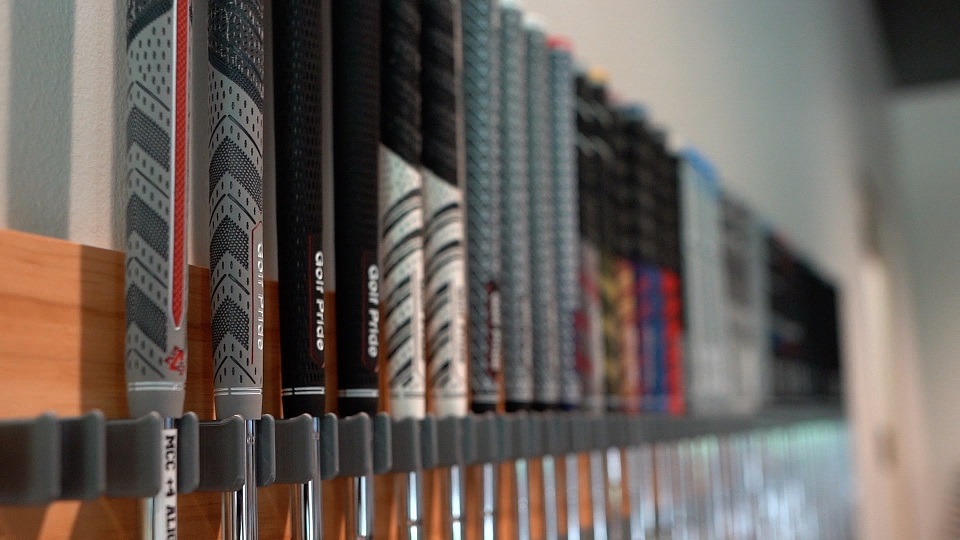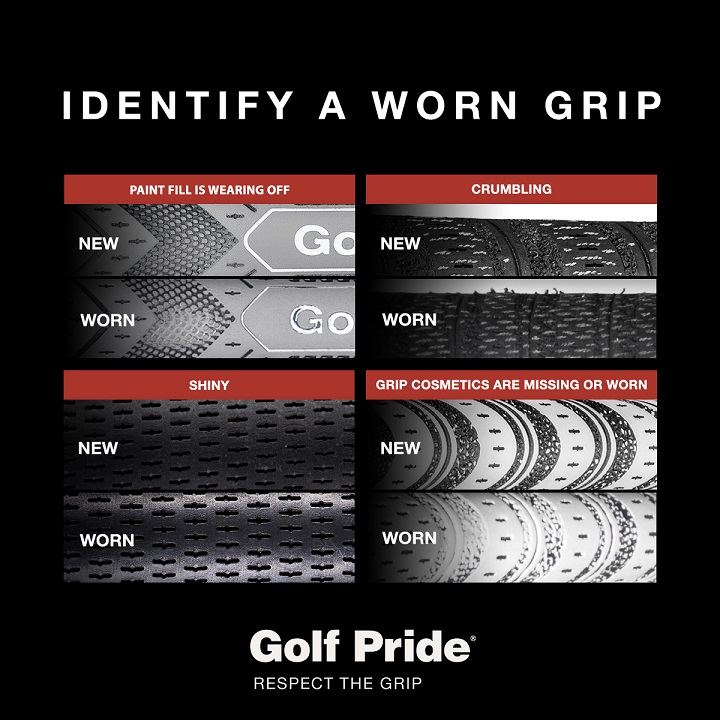I quickly realized that worn golf grips are hindering my game, even when I wear golf gloves. It’s a shame to skimp on this because your game might suffer.
If you haven’t taken heed of the valuable advice thus far, Golf Pride‘s research findings can substantiate what we have merely presumed until now.

Golf Pride research confirms…..
Players taking part in the study found that their average ball speed (average: 121.6 mph) increased by 1.3mph, and the average carry length (average: 168.6 yards) increased by 2.3 yards with the designated test club.
82% of the participants surveyed felt the new grip was ‘secure to very secure’ in their hands. Whereas, for non-new grips, only 24% said the grip felt ‘secure, to very secure.’
Over 80% of players do not regrip their clubs every year.
Research method
A test group of golfers aged 24-40, with handicaps below 5, participated in this study. Participants used an identical set of 3 standard-length (37”) Titleist-fitted irons with Project X shafts and a singular MB-fitted iron head.

Each shaft had a different Golf Pride Tour Velvet standard-size grip fitted – one new grip and two exposed to ultraviolet (UVA/B) light. The 2 UVA/B exposed grips (UV1 and UV2) were placed in a QLab QUV Accelerated Weather Tester chamber for 8 and 24 hours, respectively.
Tests were conducted in the Fitting Studio at Golf Pride headquarters in Pinehurst, USA. Participants hit 10 shots with each grip into a simulator on an artificial turf surface, and a TrackMan 4 launch monitor was used to collect the performance data.
My comments
It would have been more appropriate to consider the golfer’s frequency of play rather than solely focusing on the impact of UV radiation.
I wondered how our perspiration affects the grip’s durability and quality.
To enhance the research’s utility, it would have been beneficial to include not only single-handicap golfers in the sample but also double-digit handicap golfers. For instance, those with handicaps between 10-20 and 20-30.
